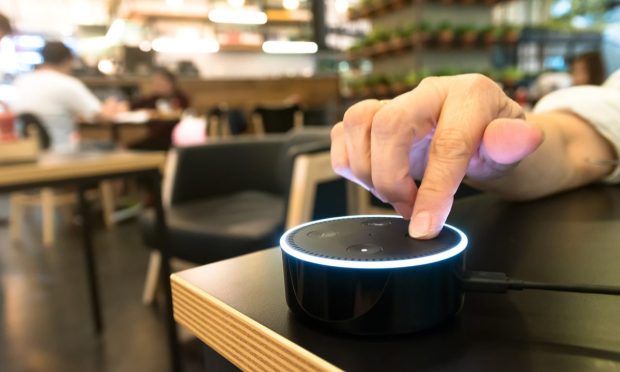Growing Stable of Voice-Activated Hardware Keeps Consumers Calling Alexa — and Amazon

In a classic Amazonian fashion, the stable of Alexa-linked services, commands and devices just keeps growing, supported by a burgeoning stable of purpose-built hardware. From Echo speakers, to displays, earbuds, eyeglass frames, the Ring video doorbell and more, Amazon’s sprawl within the segment of consumer electronics is approaching ubiquity.
In fact, when announcing its second-quarter results, Amazon reported that there are now more than 900,000 registered developers, brands and device-makers building with Alexa. Among the most recent ventures includes a six-year collaboration with Ford to bring Alexa to millions of retail and commercial vehicles in North America. And then last week, a second announcement by Samsung’s Appliance Division noted that Alexa would work alongside its own personal voice assistant, Bixby, which controls its refrigerator.
The Connected Hardware Trend
With so many registered developers, brands and device makers working with Alexa, Amazon’s commitment to connected hardware has never been more clear.
An article published by global managing consulting firm McKinsey & Company says that Amazon focuses on leveraging and building out its ecosystem: “All these devices come equipped with Alexa voice activation, enabling consumers to buy product seamlessly on Amazon, which represents an important part of the company’s expansion of its commerce channels.”
Setting the Stage
Noting that many of the items the company sold during a Prime Day were own Alexa-enabled hardware devices, the article pointed out that big, prominent deals drove sales for Alexa-enabled devices and set the stage for easy, seamless voice-controlled product ordering.
Indeed, this year Amazon itself reported that during the most recent Prime Day, when Prime members purchased more than 250 million items, the Fire TV Stick 4K with Alexa voice remote was the most popular item purchased.
Smart speakers, too, are something sold under Amazon’s own brand. Why did Amazon choose speakers among all the smart devices that it could manufacture?
International Data Corporation (IDC), a provider of market intelligence, advisory services and events, noted that in Europe, smart speakers represented 25.8 percent of the smart home market in the fourth quarter of 2019. That was up 3 percent compared to a year earlier and the category was expected to grow at a compound annual growth rate of 15.6 percent through 2024.
Amazon Alexa was the leading voice assistant with a market share of 58.3 percent of all devices. “With new models launched in the last quarter of the year, Amazon continued to gain market share, supported by the good performance of smart speakers and digital media adapters.”
Driving Higher Levels of Engagement
In an article published by strategy, research and analyst firm Futurum Research, Daniel Newman wrote that Amazon is working to make Alexa-enabled devices more proactive and engaging like mobile devices. Currently, many people use the Alexa platform only for basic functions like setting reminders and playing music.
“As more companies create voice assistant skills to tap into this market and reach customers, having useful skills like these that can drive higher levels of engagement will only continue to rise in importance.”
In its 2020 annual report, Amazon said customers have connected more than 100 million smart home devices to Alexa.
With more Alexa-equipped devices doing more things, whether those products are manufactured by Amazon or other registered developers, consumers have become more and more accustomed to turning to Alexa and Amazon when they need something.
